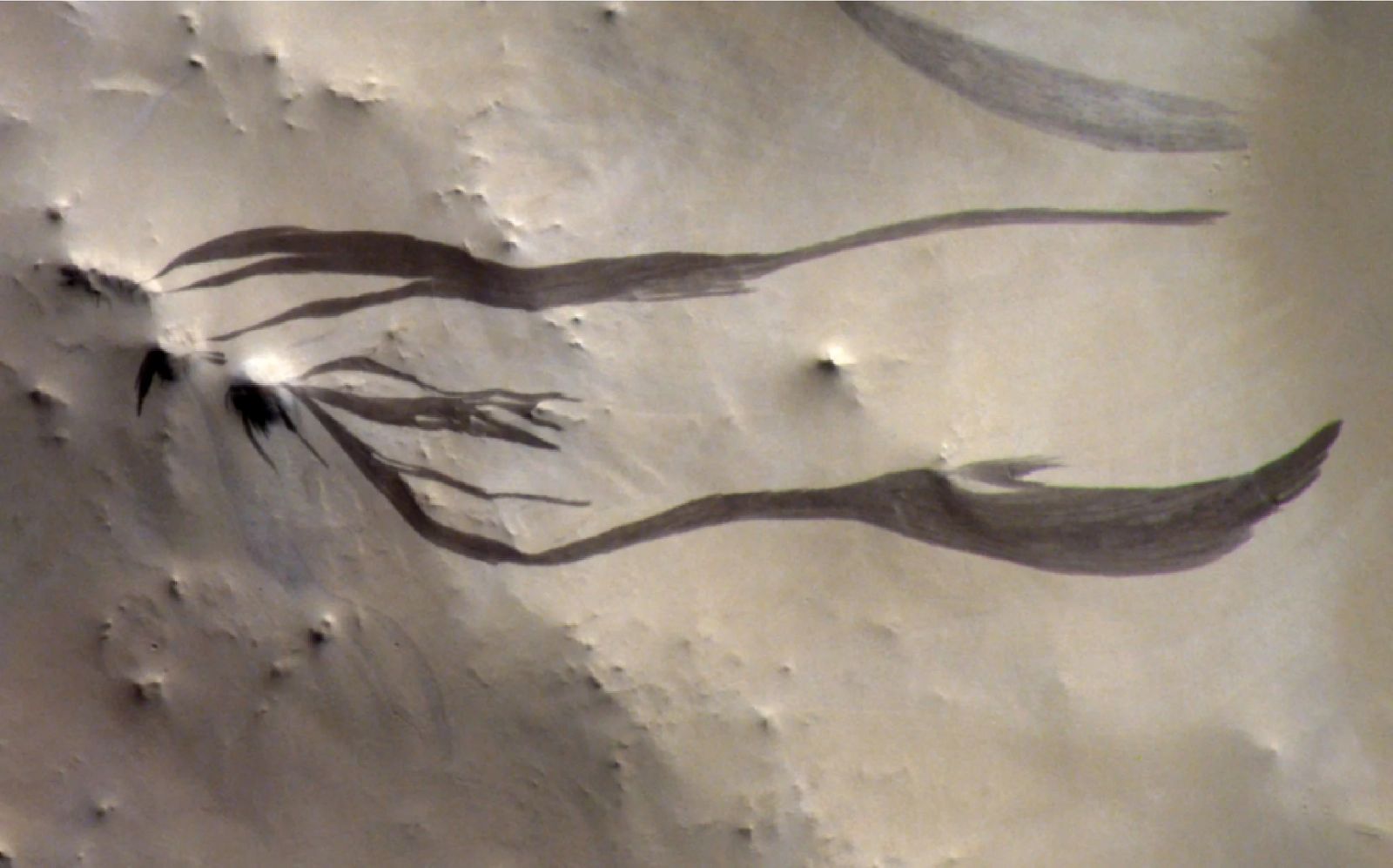AI overturns 50 years of certainties about these strange Martian structures 🔴
Published by Cédric,
Article author: Cédric DEPOND
Source: Nature Communications
Other Languages: FR, DE, ES, PT
Article author: Cédric DEPOND
Source: Nature Communications
Other Languages: FR, DE, ES, PT
Follow us on Google News (click on ☆)
These streaks, observed as early as the 1970s, long fueled hopes of seasonal flows. But the analysis of over 86,000 high-resolution images reveals a striking correlation with wind activity and dust deposits. Researchers now favor dry processes, such as avalanches of fine particles.

Thousands of strange streaks, until now considered signs of liquid water on Mars, are likely just dust sliding downhill, according to a massive AI-powered analysis.
Credit: NASA
An unprecedented mapping of the phenomenon
The international team trained an algorithm to systematically identify these streaks, creating the first global database. Over 500,000 occurrences were cataloged, covering diverse areas of the planet.
This statistical approach allowed cross-referencing the data with various environmental parameters, including wind intensity, dust deposition rates, daily thermal variations, surface albedo, frequency of recent meteorite impacts, and the location of recorded seismic activity. No link was found with typical indicators of aqueous activity, such as slope orientation or local humidity.
On the other hand, the streaks appear mostly in regions subject to strong winds. Recent meteorite impacts also seem to trigger their formation, likely by destabilizing surface layers.
Implications for future exploration
The absence of liquid water reduces the risks of biological contamination during robotic missions. Space agencies can now target other sites, more promising for the search for traces of past life.
This discovery highlights the usefulness of digital tools in planetary science. Massive data processing quickly eliminates certain hypotheses, optimizing exploration strategies.
Seasonal streaks, or recurring slope lineae, follow the same pattern. Their periodic appearance would be explained by cycles of wind deposition and erosion, rather than a water source.
Going further: how do dust storms form on Mars?
Martian storms result from extreme thermal differences between day and night. These winds lift fine particles, sometimes creating thick clouds covering entire continents.
Their intensity varies with the seasons, peaking during perihelion. Mars' low gravity allows dust to remain suspended much longer than on Earth.
These phenomena actively shape the landscape, erasing impact traces or moving dunes. Some storms grow so large they threaten the operation of rovers sent to the planet.